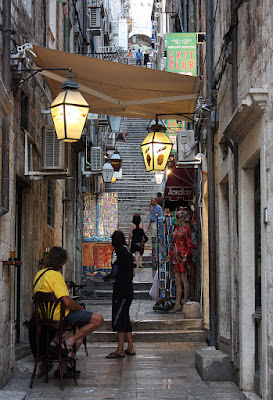Tyler Cowen posted something on his blog about investors from Hong Kong seeking to build a "charter city" in Ireland and
got this response from Mark Lutter:
Thanks for sharing the article about the Victoria Harbor Group. We, me being Chief Strategy Officer, are in discussions with Ireland. However, it is important to note that the information mentioned is dated. As any early stage company, our ideas have rapidly evolved. While the term we are using is ‘International Charter City’, we are not pursuing full scale autonomy. Our priority is to acquire land and build political support in the host country to build a city for the Hong Kong people with the target population being 50% HKers and 50% citizens of the host country.
Our key assumptions are as follows
1. The next 10-15 years will see 1m to 2m Hong Kongers migrate, the first mass migration of high skilled labor in the last 40 or so years.
2. There is value from coordinating this migration, keeping network effects, ensuring housing supply, etc
3. We see this as an opportunity to build the city of the future, cutting edge urban design, welcoming of new technology, self-driving cars, drone delivery, etc.
4. We are in discussions with several countries, not just Ireland, which we will make public when possible. We prefer English speaking countries with common law traditions, but are open to considering others.
5. Our goal is to acquire 50,000+ acres within 2 hours of an airport to build a new city for several hundred thousand residents. Obviously this depends on the political support in the host country. Smaller countries like Ireland would have smaller developments.
6. Political support from the host country is crucial. We are not asking for independence or autonomy. Of course, we wouldn’t say no to tax and regulatory relief, but that is less important than land availability and domestic buy in.
7. The city will fit in the national plans of the host country. The Hong Kongers excel in finance and manufacturing, as well as education and healthcare. While little manufacturing is done in Hong Kong, Hong Kongers own many factories in the Guangdong province. Any country looking to revive their manufacturing base could do so by attracting a bunch of talented HKers. Additionally, a good location could become a top 10 global financial center in 10 years by attracting HK financial talent.
8. We believe this is a great opportunity for any country which wants to attract a talented, hardworking, entrepreneurial population.
9. I have seen a lot of charter city projects and this is the first one I wanted to become part of the leadership team of.
There's a fascinating possibility, but count me as skeptical that this will really come off.
It did set me wondering what countries might be interested in this project. I have rejected most of the places that came to mind because they already have racial tensions between Chinese and others: the Phillippines, Malaya, Australia, South Africa. New Zealanders are too eco-conscious to want a million more people of any sort. I have a hard time seeing the Irish accepting this; they like being Irish and are comfortable enough not being rich to be hard to bribe.
Canada? The Canadian west coast already has a big Chinese population and it seems like a natural destination. People have already suggested this in the comments to Cowen's post, so the idea has occurred to others. It seems to me British Columbia could have this if they wanted it.
Jamaica? They could use the money, and they are not much concerned about race. But I guess that would mean clearing the locals off 50,000 acres, since the island is already densely populated.
What about some parts of the US? All those business boosters in Texas might like the idea, and the race problem they worry about is Mexicans. An old rust belt state, like Michigan? One of my favorite offbeat ideas has always been to let a few hundred thousand extra refugees into the country on the condition that they settle in Detroit. I can't see California finding the room, since they have trouble finding the room for new apartment buildings. On the other hand a new thriving city in the Central Valley might take some of the pressure off the Bay Area, and people from Hong Kong are already used to conserving water.
Anyway for anyone interested in geography and city building it's a fabulous thing to daydream about.
































































